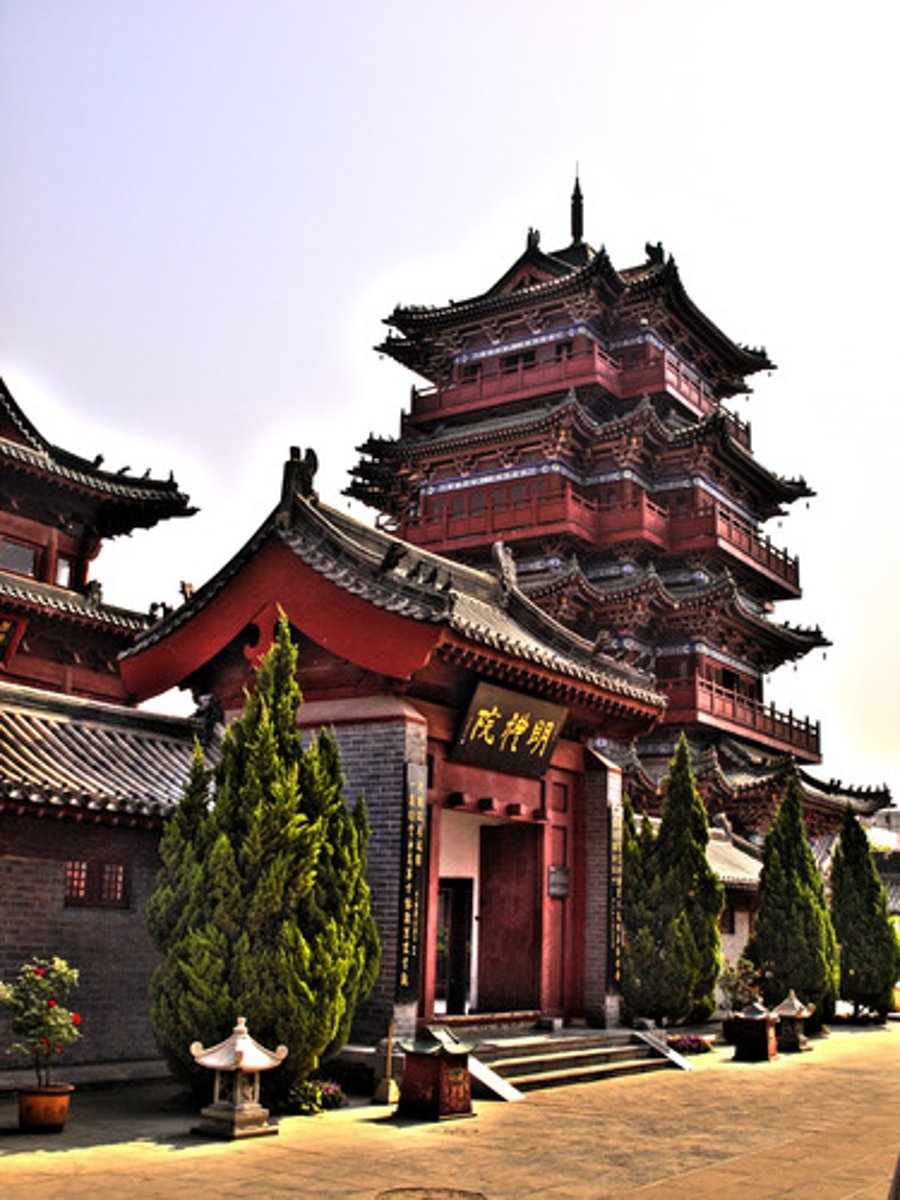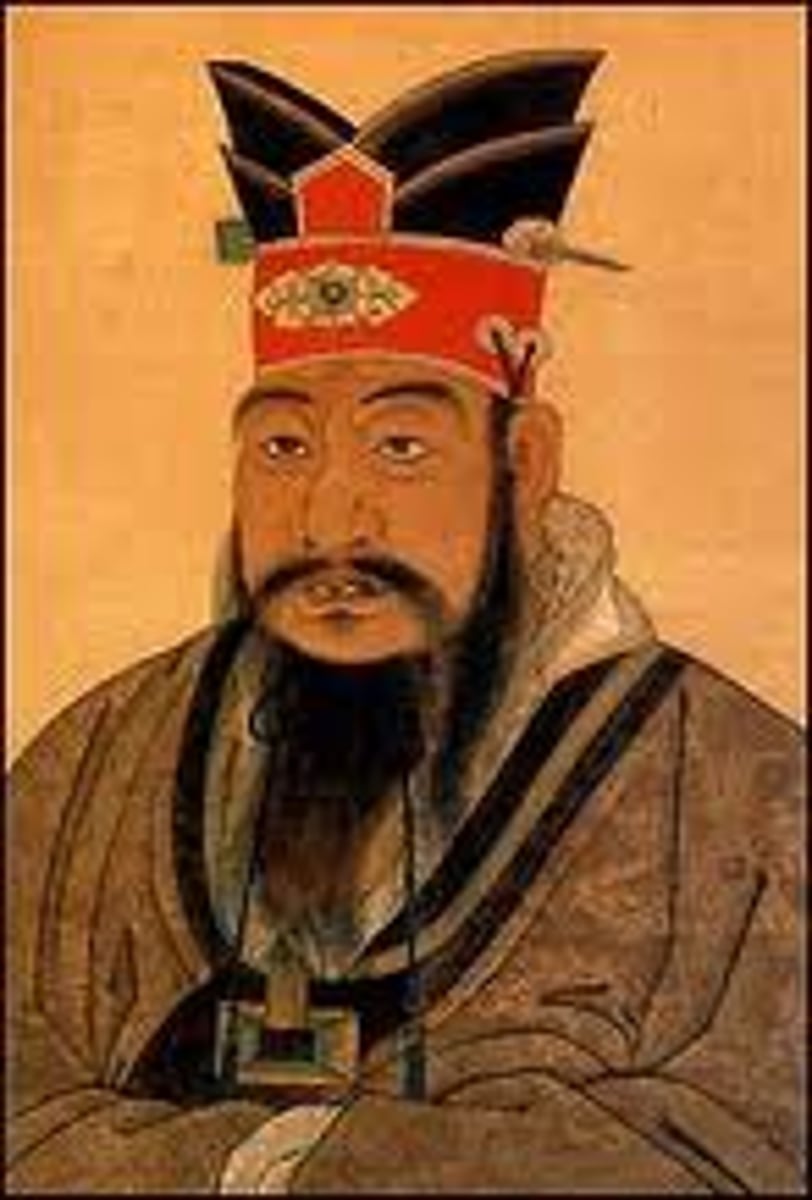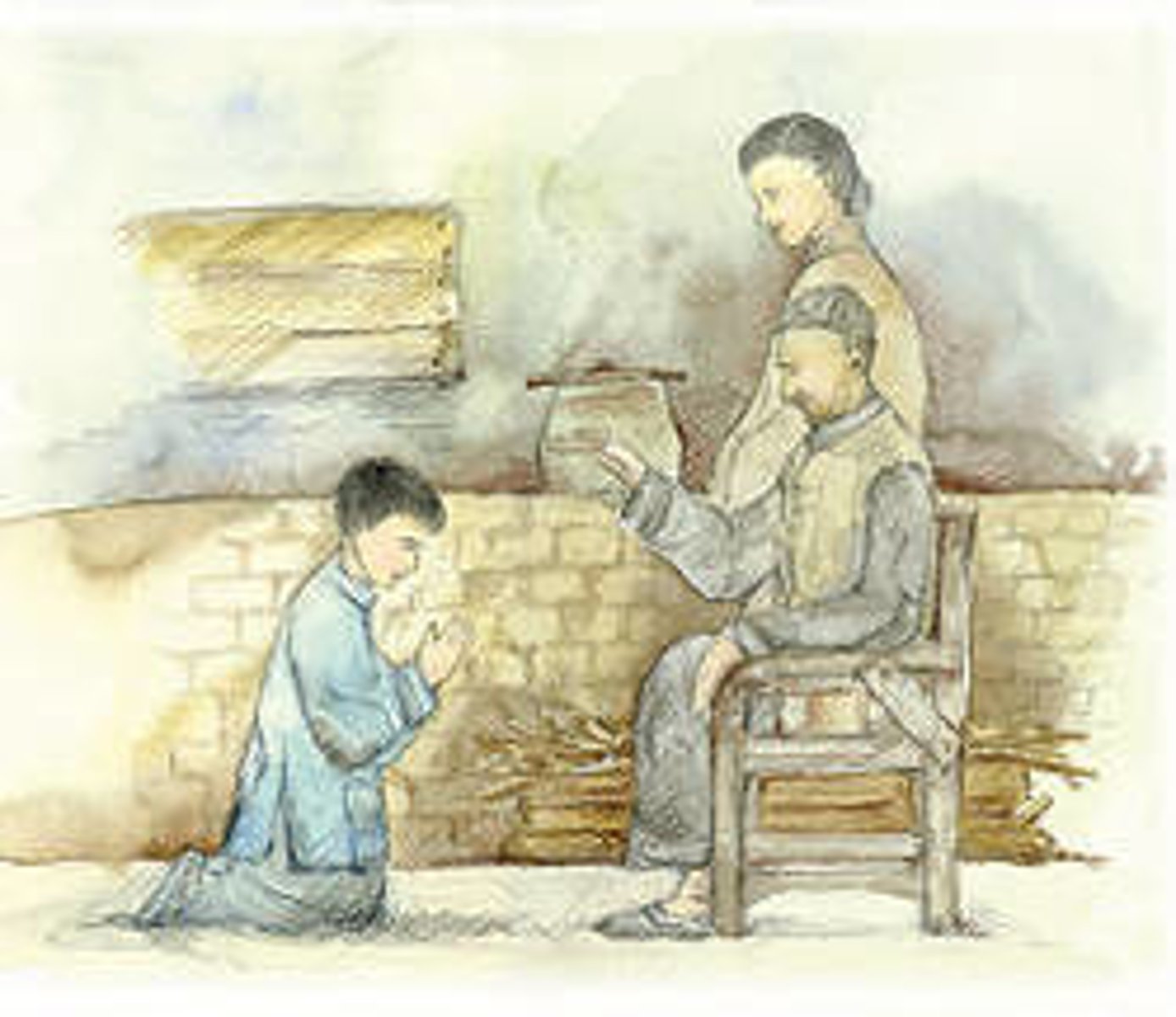AP World History Modern Unit 1 Vocab
1/47
There's no tags or description
Looks like no tags are added yet.
Name | Mastery | Learn | Test | Matching | Spaced |
|---|
No study sessions yet.
48 Terms
Song Dynasty
(960-1279 CE) The Chinese dynasty that placed much more emphasis on civil administration, industry, education, and arts other than military.

Confucianism
The system of ethics, education, and statesmanship taught by Confucius and his disciples, stressing love for humanity, ancestor worship, reverence for parents, and harmony in thought and conduct.

Filial Piety (Confucianism)
a virtue of respect for one's parents, elders, and ancestors

Imperial Bureaucracy
Division of an empire into organized provinces to make it easier to control
Neo-Confucianism
A philosophy that emerged in Song-dynasty China; it revived Confucian thinking while adding in Buddhist and Daoist elements.
Buddhism in China
Spread by the Silk Roads, took form of Mahavana Buddhism. Blended with Daoism, formed 'Chan Buddhism' (aka Zen Buddhism).
Champarice
a quick-maturing, drought resistant rice that can allow two harvests, of sixty days each in one growing season
Grand Canal
Built in 7th century during reign of Yangdi during Sui dynasty; designed to link the original centers of Chinese civilization on the north China plain with the Yangtze river basin to the south; strengthened China's internal cohesion and economic development
Textile Industry
Industries primarily concerned with the design or manufacture of clothing as well as the distribution and use of textiles.
porcelain
a thin, beautiful pottery invented in China; one of China's 3 major exports
Steel and iron production
A key element during the Song Economic Revolution; helped popularize mass production and new production methods
Islam
A religion based on the teachings of the prophet Mohammed which stresses belief in one god (Allah), Paradise and Hell, and a body of law written in the Quran. Followers are called Muslims.
Judaism
A religion with a belief in one god. It originated with Abraham and the Hebrew people. Yahweh was responsible for the world and everything within it. They preserved their early history in the Old Testament.
Christianity
A monotheistic system of beliefs and practices based on the Old Testament and the teachings of Jesus as embodied in the New Testament and emphasizing the role of Jesus as savior.
Abbasid Caliphate
third of the Islamic Caliphates of the Islamic Empire. The rulers who built their capital in Baghdad after overthrowing the Umayyad caliphs. In started in 750 CE. It flourished for two centuries, but slowly went into decline with the rise to power of the Turkish army it had created, the Mamluks. In the 13th century the Mongols displaced them.
Turks
Central Asian nomads related to the Xiongnu peoples that pressured Han China. Organized as tribes that constantly fought each other. Most converted to Islam. Most societies sought to trade with settled people. Nobles controlled absolutely in times of war.
Seljuk Empire
An empire formed by Turkish and Persian Sunnis, lasting from 1037 to 1194 A.D.
Mamluks
Under the Islamic system of military slavery, Turkic military slaves who formed an important part of the armed forces of the Abbasid Caliphate of the ninth and tenth centuries. Mamluks eventually founded their own state, ruling Egypt and Syria (1250-1517)
Delhi Sultanates
For about 320 years beginning in 1206, five dynasties ruled over the city of Delhi in India. A former slave named Qutb-ud-din Aibak spread Delhi's territory and influence across northern India. He also spread the influence of the Islamic religion throughout the region. After years of conquest, the Sultanate conquered and incorporated that majority of the Indian subcontinent. This resulted in a sort of unification process between the diverse peoples of the region, but also led to a split in Indian culture, as Hindus increasingly fought against the Sultanate in the 16th century, leading to its demise.
Sufis
mystical Muslim group that believed they could draw closer to God through prayer, fasting, & simple life
Dar al-Islam
an Arabic term that means the "house of Islam" and that refers to lands under Islamic rule
Abbasid
A dynasty that ruled much of the Muslim Empire from 750 to about 1250.
Hinduism
A religion and philosophy developed in ancient India, characterized by a belief in reincarnation and a supreme being who takes many forms
Bhakti Movement
a Hindu movement that sought to emphasize the idea of devotion to God (Salvation); women began to receive greater importance and recognition in society
Monasticism
A way of life in which men and women withdraw from the rest of the world in order to devote themselves to their faith (monetarists and nunneries)
Great Zimbabwe
A powerful state in the African interior that apparently emerged from the growing trade in gold to the East African coast; flourished between 1250 and 1350 C.E.
Hausa Kingdoms
1 kingdom divided into 7 states that were connected through kinship, blood, or ethnic ties; had no main central authority but rather ruled each state separate from one another;mainly benefited economically from the trans-Saharan trade network
Decentralization
Degree to which decision-making authority is given to lower levels in an organization's hierarchy.
Feudalism
the dominant social system in medieval Europe, in which the nobility held lands from the Crown in exchange for military service, and vassals were in turn tenants of the nobles, while the peasants were obliged to live on their lord's land and give him homage, labor, and a share of the produce, notionally in exchange for military protection.
Manorial System
self sufficient, economic structure that is the relationship between the Lord and the peasants or serfs who produced all the necessary goods to keep the manor running
Free Labor
Wage-paying rather than slave labor
Coerced Labor
a system where the workers were forced to work based on threats, pressure, or intimidation.
Serfdom
Feudal system, the use of serfs to work the land in return for protection against barbarian invasions
Heian Period
The era in Japanese history from A.D. 794-1185, arts and writing flourished during this time
Theravada Buddhism
the oldest of the two major branches of Buddhism. Practiced mainly in Sri Lanka, Thailand, Burma, and Cambodia, its beliefs are relatively conservative, holding close to the original teachings of the Buddha
Mahayana Buddhism
Also known as popular Buddhism, is allows people more ways to reach enlightenment and boddhisatvas can help you reach enlightenment.
Tibetan Buddhism
a Buddhist doctrine that includes elements from India that are not Buddhist and elements of preexisting shamanism, a tradition of Buddhism that teaches that people can use special techniques to harness spiritual energy and can achieve nirvana in a single lifetime
House of Wisdom in Baghdad
Large Islamic-based Library and learning center. Focus of conversion of Greek and Roman classics and Indian learning into Arabic. Preserved knowledge.
Nasir al-Din Tusi
Persian mathematician and cosmologist who inspired Copernican model of the solar system
Rajput Kingdoms
These were several different kingdoms shown in India before the time of the British. The Rajputs had their own culture, but the country was clearly divided in many ways. Wealth, Sexism, and Warrior-like honor is emphasized.
Khmer Empire
The most powerful and longest-lasting kingdom on the mainland of southwest Asia, centering in what is today Cambodia.
Sukhothai Kingdom
the first Thai kingdom
Sinhalese
a member of a people originally from northern India, now forming the majority of the population of Sri Lanka.
Mayan Civilization
a member of a major pre-Columbian civilization of the Yucatán Peninsula that reached its peak in the 9th century a.d. and produced magnificent ceremonial cities with pyramids, a sophisticated mathematical and calendar system, hieroglyphic writing, and fine sculpture, painting, and ceramics.
Incas
A Native American people who built a notable civilization in western South America in the fifteenth and sixteenth centuries. The center of their empire was in present-day Peru. Francisco Pizarro of Spain conquered the empire.
Chaco Canyon
An urban center established by Anasazi located in southern New Mexico. There, they built a walled city with dozens of three-story adobe houses with timbered roofs. Community religious functions were carried out in two large circular chambers called kivas.
Mesa Verde
The largest complex of Anasazi cliff-dwellings in the United States Southwest, built between about AD 1150 and AD 1300
Cahokia
Mississippian settlement near present-day East St. Louis, home to as many as 25,000 Native Americans